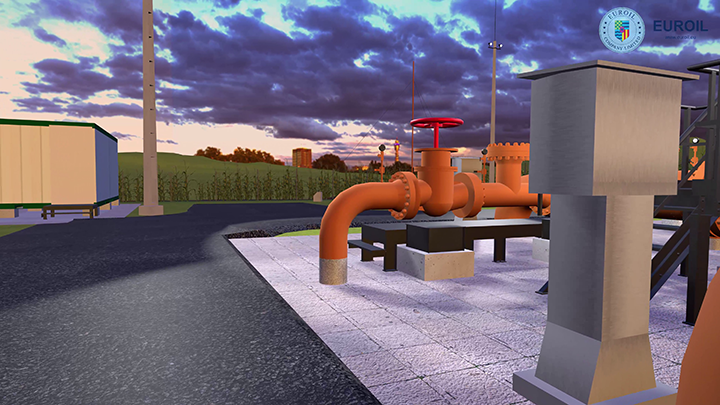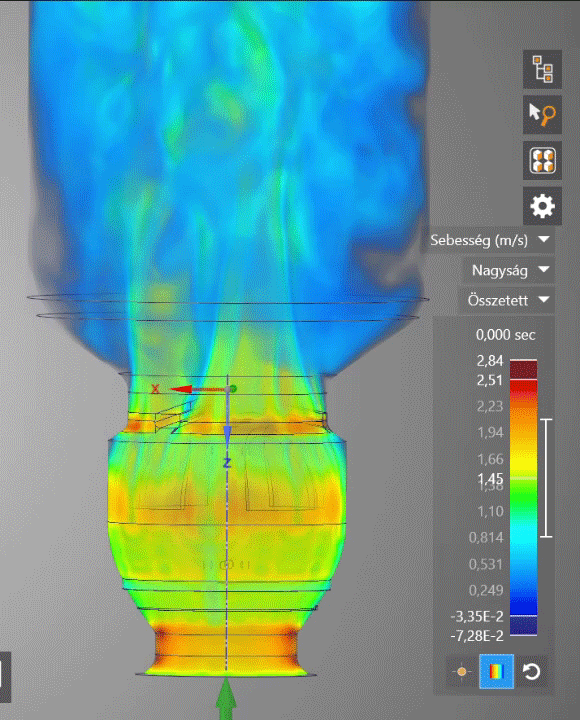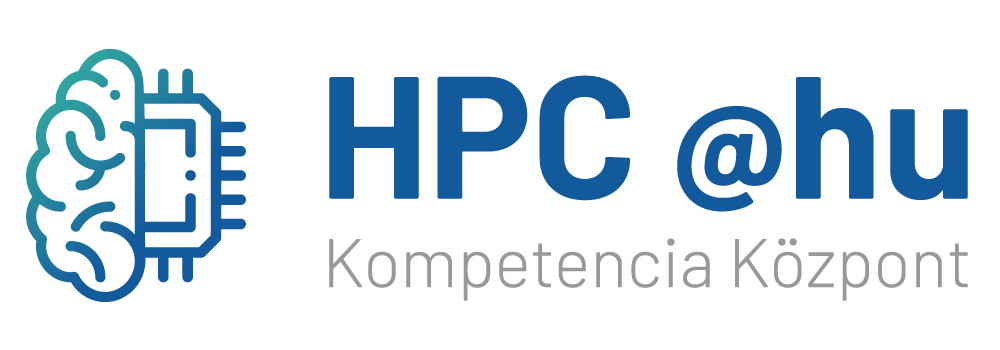"... THANKS TO THE SUPERCOMPUTER, THE ENGINEERING WORKFLOW ITSELF IS CHANGING." – EUROIL INTERVIEW

How would you introduce the company?
EUROIL was founded in 1991 and is 100% owned by Hungarians. Its main profile is technical planning and expertise, primarily in the gas and oil industry, energy industry, chemical industry and food industry. Typically, we participate in larger projects, in the design and construction of plants and power plants. Customers include Siemens, MOL, FGSZ and MFGT which deal with the transportation and storage of natural gas, Hyundai, Thyssen-Krupp, the Japanese Marubeni, MVM Paks NPP Ltd., the vegetable oil producer Viterra, Hungrana and Péti Nitrogénművek Zrt. in Pét.

When was supercomputing introduced to you?
Recently, we have had to face the fact that we are pushing the limits of our own hardware capabilities. We work with the most powerful workstation PCs available on the market, so far we have solved everything among us, but this year we have started looking for other options as well. We use software that works with a very large number of elements. Actually, the calculations would run on our devices as well, but in an unpredictable amount of time. We started looking for a solution, we tried to use external capacities for ordering tasks. However, we did not know how to access a supercomputer. We tried through universities, but we could not reach our goal.
Has anyone from the company used a supercomputer before?
No. Practically, it was a leap into the unknown, but for us, it is also just a server with many cores.
Do your competitors use supercomputers?
We have many profiles, so it is difficult to determine who we consider to be competitors. Traditional designers don't use HPC much, at least not that we know of.
How did you get in touch with KİFÜ?
At a conference, the business development employees of KIFÜ presented and we immediately went to see them during the break. The following week, we had a personal consultation and instantly took advantage of the opportunity they offered, and since then we have already run two pilot projects.
What was the most surprising thing about using HPC?
Being able to access it. The first surprise was that it can be used by industrial players as well as the academic sector. Then, the fact that three video cards are connected to one node of Leo (KIFÜ's supercomputer operating in best effort mode), significantly accelerated the work. Although, the fact that the machine is not running the latest operating system has been unpleasant. We always have to use the latest software, otherwise, we wouldn't be competitive. It is also often a requirement, from a quality assurance point of view, to perform the calculations with the latest software, so even if we wanted to, we would not be able to work with older versions.
What can be known about the two pilot projects?
We had a finite element calculation and rendered videos. We ran both successfully and we are very satisfied.
How smooth was the workflow?
It took a week to set up the ANSYS software on the machine, and after that everything went smoothly. What was definitely new was that we did not upload and download the solution file, but directly from the software, using the ANSYS RSM module, we accesed the supercomputerHPC. We don't even have to log in, we send the task from the software and get the result back automatically.
Is there an HPC specialist within the company?
Not really, we are still getting to know the technology, we would not call ourselves HPC experts.
Can the effectiveness of using HPC be measured?
In the case of ANSYS, at our company, one calculation can run on a maximum of 32 cores per machine, and on KIFÜ's machines it runs on up to 320 cores, for now, but it will run on more on the Komondor. In this way, we don't have to wait a month to complete a calculation, we have it in three or four days. This can also be calculated in hours of the engineers, which can come up to a quite large sum. It is also an aspect that it would also run on our own machine park, but in this case, the software license is reserved, and we cannot work alongside it. In the case of more complicated calculations, we would not even be able to complete the project on time. There are future projects in sight where the work would simply not be ready by the deadline on a traditional PC. And for rendering, the more than 200 video cards are a huge advantage. In addition, if we want to rent adequate computing capacity on the market, that would also have a cost.

Has this possibility also come up?
Yes, we have been informed about the fees and conditions. We have also investigated HPC and cloud services, but we found that these services do not operate in such cost-friendly conditions. At KİFÜ, we had the opportunity to test whether what we do works, but if we were to buy a service, there would already be costs for trials and testing. What is closely related to this is the support; István Tamás from KIFÜ willingly helped us a lot. There was a very intense transfer of knowledge between us.
How would you describe the cooperation with KIFÜ?
It was more successful than expected. It was also surprising that KIFÜ operates exactly like a service company, flexibly and striving for efficiency. Especially compared to the fact that previously, in the university environment, we did not find a contact who knew exactly what the procedure for such a collaboration was. Now that we have made contact, we have received the opportunity and full support. Thanks to regular information we are up to date.
Was it easy to implement your own software license?
To our knowledge, the 2020 version of ANSYS already existed, but whoever used it did not use the same method as we did. Automation is made possible by ANSYS RSM software, but setting it up was a long and time-consuming procedure. Everything had to be set up systematically, step by step, both on the supercomputer and here on our computer. The same module that we have had to be installed on the HPC infrastructure, so that the two machines could communicate with each other. We got stuck many times, with the licensing and the settings, but together, with the support of KIFÜ, we managed to solve it. Actually, we were just contributors.
How long did it take?
Three weeks. A lot of this time was spent waiting for an email or the next meeting, so not so many working hours. But it's inevitable, you have to put in the work because it's not a routine task. When it comes to rendering, it also took two weeks to find out which was the optimal setting. It can be run on a supercomputer in several modes, but making sure that the software can take advantage of all video cards is a separate line of code. This is why we had to find out what is the best practice for setting up the scheduler and rendering programme.
How were you able to determine the capacities required for the pilot projects?
We knew the running times on our own PCs and could make comparisons from that, but at first, we only ran one test, for which we were given a minimum amount. You can request capacities later, the service is very flexible from this point of view as well.
How hard is it to use a supercomputer?
Once someone has tried it, it's really easy. There are initial difficulties, but with minimal experience, it is no longer difficult at all. What is inconvenient is that the available machines are very busy and you have to wait.
Were there any problems or interruptions during the cooperation?
Only what we have already mentioned, the HPC does not run the latest software. The KIFÜ descriptions are good, there are step-by-step instructions on how to set them up, and if we still didn't understand something, we could call and get answers to our questions immediately. The harmony was established very quickly, even now, while we are talking here, one of our projects is running. Also, the roles of the KIFÜ staff were not completely clear to us at first, and at first, we did not know who to contact. There is no such list, although it would be useful.
Do you have any comments that could improve the quality of the service?
Yes. You never know when it will be our turn. We only see that our project is waiting or running. But we have to work to a deadline in the competitive market, from the point of view of planning it would be very important to know when it is our turn. As we see it, what requires more nodes is waiting a long time. We also see that we have used 8000 CPU hours on Leo so far out of the 30000 we have received.
Was that all you asked for the pilot projects?
No, first we got 5,000 hours, and when we reached that, we got more from KIFÜ.
Did you have reservations about using HPC, given your trade secrets?
Yes, we did. But the ANSYS software only sends the tasks to be calculated to the HPC and then downloads the results. If someone got hold of that text file, they would only see numbers, nothing more. The ANSYS user, if set to solve the problem with HPC, does not need to know what is going on in the background. But we will not upload very sensitive data containing valuable technical solutions. We will only do the calculation there, technical information and innovation will not be uploaded to the supercomputer. Moreover, we know that KİFÜ is also planning to apply for the ISO 27001 information security standard, so we have no reservations, even though we participate in many projects where information is confidential.
Are you planning to continue the work, are you waiting for Komondor?
Yes. The fact that it spectacularly speeds up calculations is a huge advantage. It is good to complete a task in hours instead of days, and thus the software license is not permanently occupied. But most importantly, thanks to the supercomputer, the engineering workflow itself is changing. Until now, the practice was that whatever we could we had to figure out in advance, to make the running time short. That's why we had to think a lot, adjust, and only then send the calculation to the machine. But with HPC, you can try everything and see what happens. This is for what engineering knowledge is required, if there is a result, it must be reviewed through an engineering eye to see if it is correct. If not, you need to go through the settings. If it's a long calculation and takes days, that's so many days out.
Do you plan to use other software on the Komondor?
We are still exploring the possibilities.
Is it possible that you will have a joint project with the specialist met at the events of the HPC Competence Centre?
If he has the knowledge that can be useful for one of our projects then yes. We are applying for innovative research projects, which may require a specialist in materials science. But we are also part of the Hungarian space cluster, we also see the ESA (European Space Agency) tenders, there are also projects where special expertise may be needed.
Which businesses would you recommend using HPC?
Definitely for companies dealing with visualization and rendering, as well as for those who work on innovative solutions and simulations. Just not too many of them (laughing), because we will need the computing capacities.
What do you think of the future of HPC?
We are not experts of this area. It is certainly evident that computing needs are growing exponentially in the world, and software is also requiring ever larger capacities. In addition, artificial intelligence is developing rapidly, so the need for supercomputers will increase.
Are your needs also increasing?
Yes. There are problems that can be solved by hand, with engineering thinking, but if this process is automated, then we can solve these problems with the supercomputer, which improves the quality of the design and expands safety. It is also a standpoint, that the latest standards has already required finite element calculations, they must be part of the documentation. This is also important from the point of view of quality assurance, and thus it will be the most economical, for example, the structural engineer does not have to leave reserves in order to be able to sleep peacefully. Of course, partial tasks do not necessarily require HPC, but in order to be able to analyze a complex structure or system as a whole, it is now absolutely necessary.

